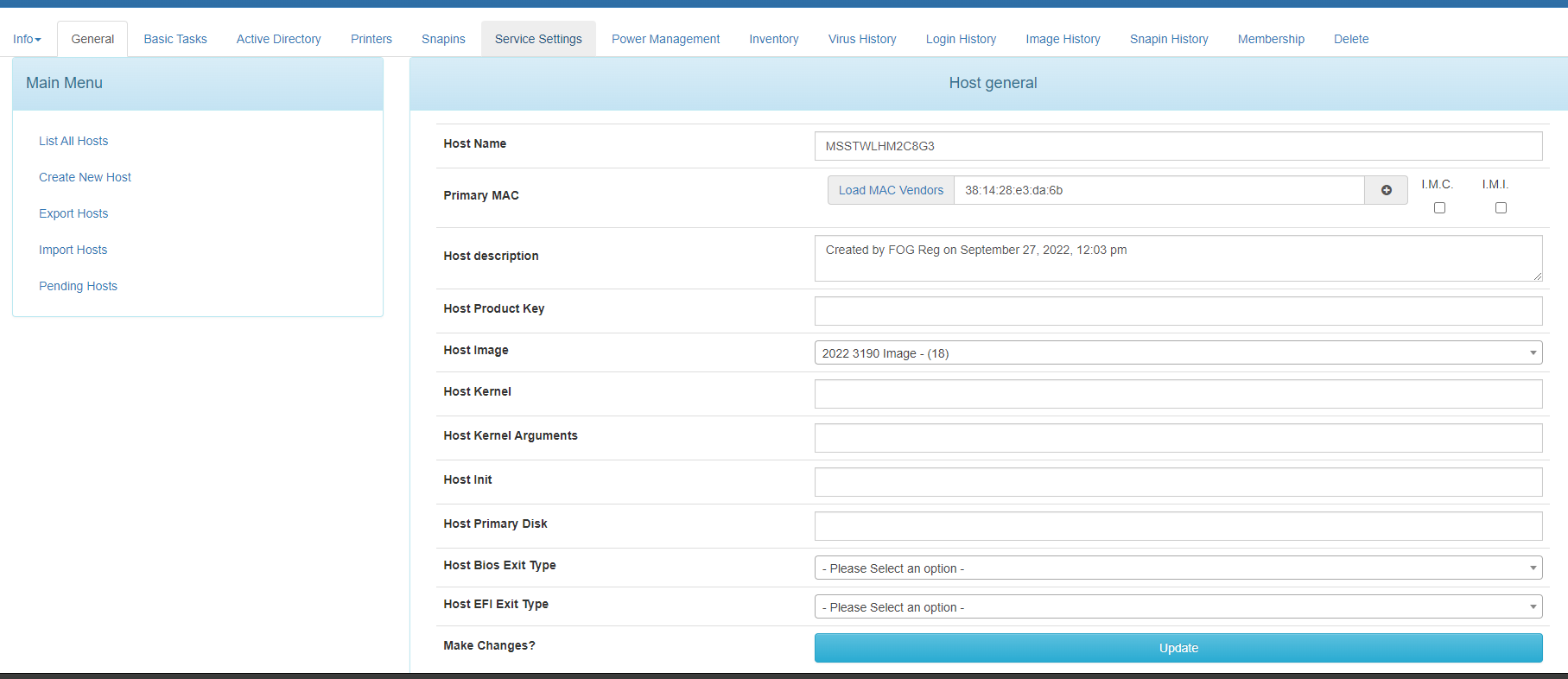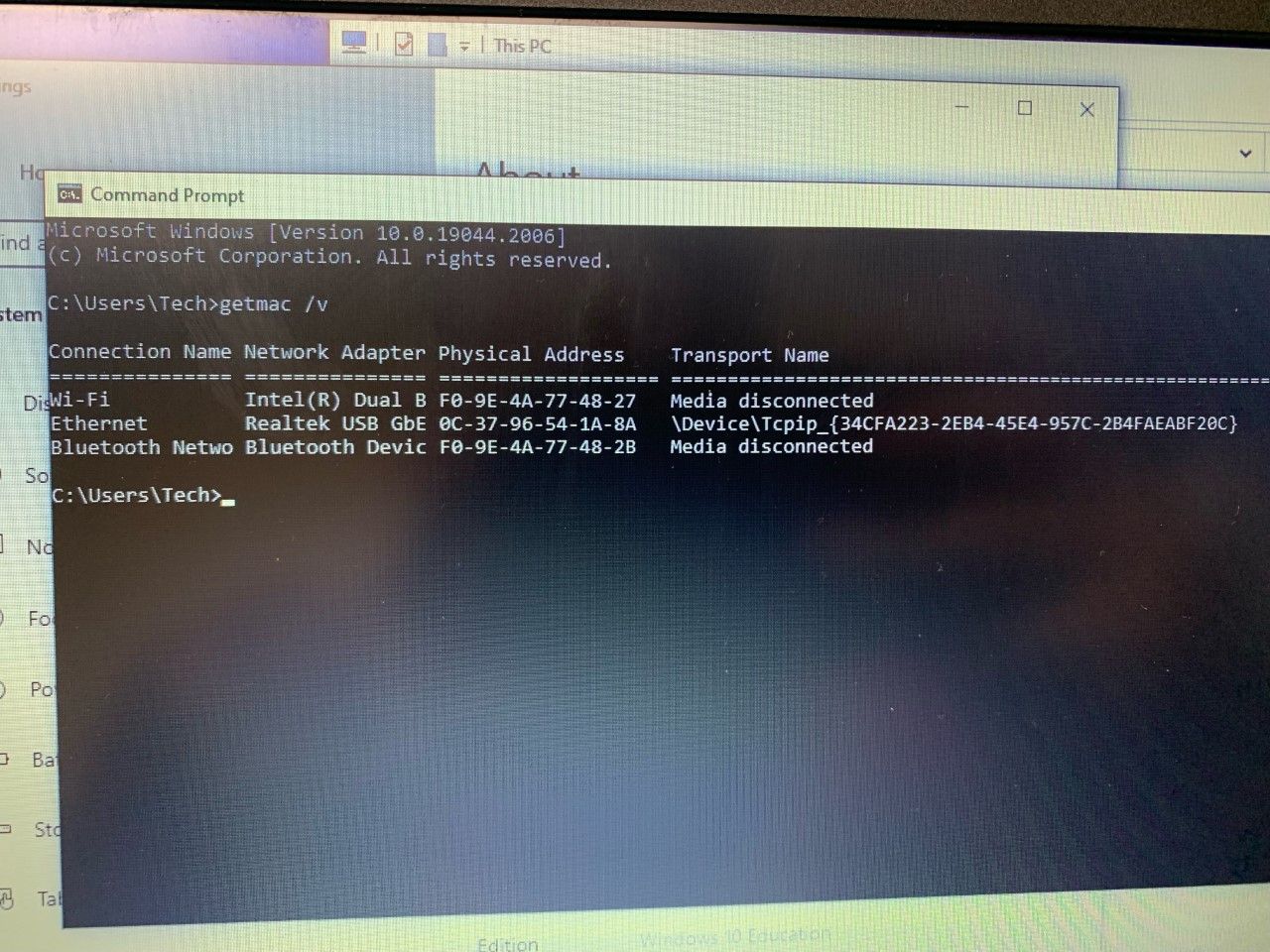Joining hosts to domain?
-
We are working on bringing our fleet into fog as hosts in the hope that during registration setting the hostname might eliminate some post time in naming the devices and joining to the domain.
Our first attempt has been unsuccessful. I made sure to set the Active Directory defaults in the webUI and told the device during registration I wanted it to join to the domain.
This device also did not change its computer name to what we entered for the hostname during the full registration and inventory.
Any help with this is greatly appreciated!
-
@Kureebow Do you gave the fog-client software installed on the machines? Domain join will only work using the client.
-
Yes we do have it installed.
-
@Kureebow Well then step two, check the log file in that machine (usually found in
C:\fog.log). -
Please forgive my ignorance but I can see the errors but don’t know how to make heads or tails of it.
-
@Sebastian-Roth I have tried removing the service and reinstalling as well as using groups to reset the encryption data with no luck.
-
@Kureebow From the fog-client log it looks like the host named
DESKTOP-1RPRNDGdoes not exist in the database yet (the logic tries to find it via the MAC address) because the server returnsMiddleware::Response Invalid hostand therefore the fog-client is trying to auto-register this host.Then on the next loop of the fog-client the server returns
Middleware::Communication ERROR: Could not download filefor the very same certificate file it was able to load just a minute earlier. So this looks like a non stable communication between fog-client PC and the FOG server. Are both on the same subnet or in different networks?Let the fog-client run longer and upload the full fog.log again.
-
@sebastian-roth The host named Desktop-1RPRNDG is registered with FOG because when I PXE Boot to fog it does show registered at the top and the device is listed in the WebUI along with its correct host name that was assigned during the full host registration and inventory.
Both devices are on the same subnet, VLAN, and are both sitting in front of me in my office. However, the server is plugged into one switch while the host device is plugged into another. I can try putting them on the same switch to see if I get a different result.
Here is more of the fog.log
Thank you!
-
@Kureebow Can you please take a picture of the host settings (FOG web UI) of this particular host where we can see hostname and all the MAC addresses assigned to it?
-
@sebastian-roth Is this what you need?

-
@kureebow said in Joining hosts to domain?:
Is this what you need?
Kind of. Though I would like to see this for the host mentioned in the logs:
DESKTOP-4Q9J25B(interesting this name changed at some point in the last log you posted…) -
@sebastian-roth So this host is the same device. This was named by serial number. The host MSSTWLHM2C8G3 is DESKTOP-4Q9J25B. When I boot to FOG on the device it shows as MSSTWLHM2C8G3 but when inside of windows the name still shows as DESKTOP-4Q9J25B.
-
@sebastian-roth For instance. When we did the full host registration and inventory we entered the name MSSTWLCT403F3 for this device as seen in the snip-it below.

When we deployed the image to the device containing the FOG Service it re-added itself to the Host list waiting for approval with the following new name.

So our name change command is not working from when we manually put in the name of the device through full host registration and inventory.
I’m not trying to be wordy just trying to explain the Best I can.
Although the mac addressed between these two devices are showing differently in WEBUI they are the same device.
-
@kureebow said in Joining hosts to domain?:
Although the mac addressed between these two devices are showing differently in WEBUI they are the same device.
This is probably the key two what’s going on here. When I look at the logs I see it tries to register with the following MACs:
hostname=DESKTOP-4Q9J25B&mac=0C:37:96:54:1A:8A|F0:9E:4A:74:D7:AE|F0:9E:4A:74:D7:AF|F2:9E:4A:74:D7:AE|F0:9E:4A:74:D7:B2but non of those MACs matches the one we see in the picture you posted.Please boot up that machine to the Windows OS and run
getmac /vin a CMD window. Take a screenshot and post that here.Is this a laptop kind of device? Do you use some sort of USB NIC adapter?
-
@sebastian-roth This is a laptop using a USB NIC adapter.

-
@kureebow said in Joining hosts to domain?:
This is a laptop using a USB NIC adapter.
Search the forums and the web for “MAC address passthrough”. In short: the USB NIC has it’s own MAC address which can either be seen or masked by a system MAC. But there is no general rule. iPXE (boot menu), Linux kernel (FOS imaging environment) and host OS (e.g. Windows) use different drivers and can show different MACs for the same machine.
-
@sebastian-roth I tried following the directions on Dells Website to enable MAC Passthrough in Bios but I do not see an option listed anywhere. We are using Dell 3190’s. When I look in the system information section I do see the MAC Passthrough address listed but I do not see an option to enable it.
-
@Kureebow Try adding the ethernet MAC address
0C:37:96:54:1A:8A(seen bygetmac) to this host as a secondary MAC via the FOG web UI.Possibly it will tell you the MAC exists already. Then check the “Pending Hosts” (web UI -> Hosts -> left side menu) if you can find the host there.
-
After adding the mac Address I have been unsucessful in getting this device to reimage. This was not an issue prior. The device gets to a certain percentage then will not move forward. I let the device image overnight and after 15 hours it never moved past 94.39%.
Thank you for your help.
-
@kureebow said in Joining hosts to domain?:
After adding the mac Address I have been unsucessful in getting this device to reimage. This was not an issue prior. The device gets to a certain percentage then will not move forward. I let the device image overnight and after 15 hours it never moved past 94.39%.
I can’t see why adding a secondary MAC could cause what you describe. What do you actually see on the device’s screen? Does it deploy very slow or hang?
To prove me wrong you might remove the secondary MAC address again and see if deploying an image can finish again.